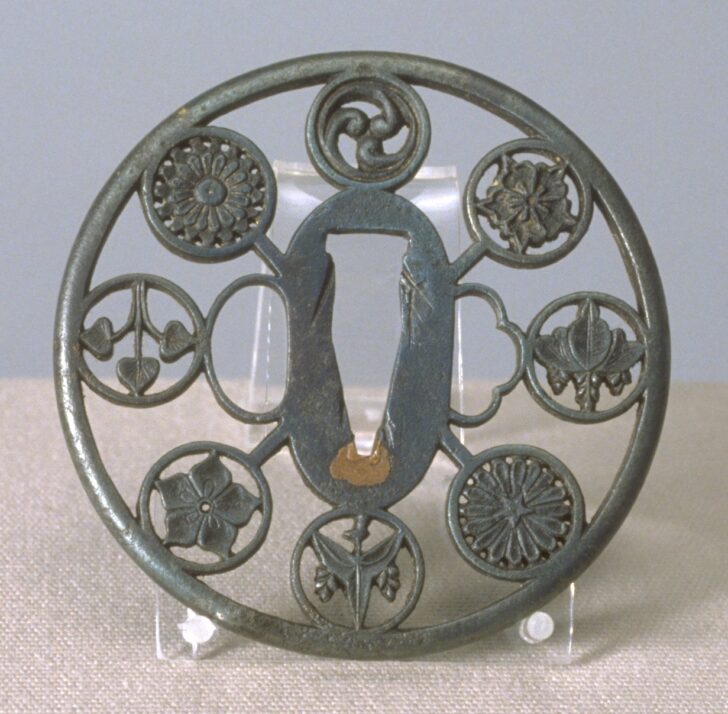Tsuba (sword guard) with eight family crests
Japanese

Description
Tsuba are intended to protect the user’s hand, first by shielding it against a blow from the opponent’s blade, and second by preventing it from slipping onto the razor-sharp edge of the weapon being wielded. Until the early seventeenth century, simply designed iron tsuba were dominant, as seen in the example here bearing a mushroom motif. When the Tokugawa regime required samurai warlords to travel regularly to the capital, Edo, and mandated that their wives and children reside there, considerations of urban fashion became more influential than battlefield practicalities in samurai attire and accessories. The tsuba became more an object of display than a functional item—a trend that further intensified when affluent merchants were permitted to carry swords in public and also began to demand attractive tsuba.
As is well represented by this collection, there was great artistic creativity at play in tsuba-making during the Edo period. The newly developed shakudô (a copper–gold alloy of a lustrous purple–black color) was used to create relief designs. Openwork chiseling was a versatile method for creating dramatic representations of family crests or light, airy, and elegant plant motifs.
(Label for UMMA Japanese Gallery Opening Rotation, March 2009)
Subject Matter:
Family crests were important markers of the samurai class, in which military and political connections and blood and marriage relationships heavily weighed and determined one’s social status. This tsuba with eight different family crests alludes that the owner has some kind of relationship to eight different households or lineages; either of his own household (One household used more than one crest, although usually there was one dominant than other crests), his relatives or his allies.
Physical Description:
Circular tsuba, made of iron. Inside an exterior circle, eight smaller circles are placed with the same spacing. The eight circles are connected to the exterior circle as well as to the three center holes where kôgai, blade, and kozuka are placed. Each of the eight circles have a different family crests. The openwork technique seen here is called "marubori" (round carving). The surface is slightly textured by minute stippling.
Usage Rights:
If you are interested in using an image for a publication, please visit https://umma.umich.edu/request-image/ for more information and to fill out the online Image Rights and Reproductions Request Form.